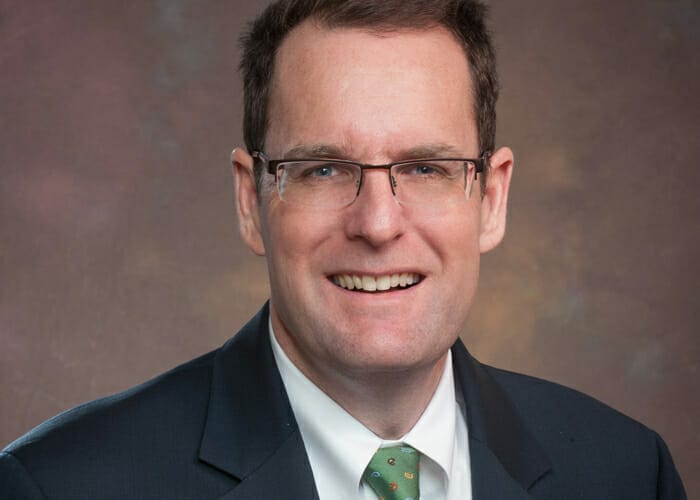Jeb Burns, chief investment officer of the $10.5 billion Municipal Employees’ Retirement System of Michigan has developed a valuation-driven investment strategy that eschews rigid asset allocations in favour of flexibility. It allows the fund to take bold steps such as seeding new managers and increasing allocations as and when opportunities appear.
Under Burns’ 16-year tenure, MERS’ internal investment team has grown to nine professionals, who oversee a broad range of assets, develop bespoke research and strategies, and manage about 30 per cent of the portfolio in house.
Two focuses for the fund are diversifying outside of the US, and continuing to build exposure in real assets. Current strategies include moving 15 per cent of the equity allocation out of US stocks and into emerging-market and international developed equities.
“The rationale is from a valuation perspective; stocks are cheaper in these markets relative to the US and although there has been a good run in emerging markets, there is still a lot of opportunity to go to the upside,” Burns explains. “There is a good chance that volatility will be elevated in these markets, but we are making these shifts on a minimum three- to five-year time horizon, and as long as we believe the market has enough breadth to weather geopolitical risk, we are comfortable.”
MERS’ assets are now divided among equities (55 per cent) fixed income (18.5 per cent) real assets (13.5 per cent) and diversifying strategies (12.5 per cent).
Still room for active managers
About two-thirds of the US equity allocation is in passive strategies and most is managed internally. However, unlike peers who have concluded outperformance is difficult in US equities, Burns still uses three active managers here, favouring longstanding 10-year relationships that have “had outstanding performances”.
Mike Charette, director of public markets at the fund and Burns’ first hire back in 2002, adds: “We aggressively negotiate fees. When people say active US doesn’t work, they are paying closer to 1 per cent for their allocation. We pay our active managers closer to passive prices.”
MERS also runs three internal active model-driven US equity strategies. In international equities, active management includes an underlying passive sleeve that gives the fund the liquidity to move the allocation around to “make sure we are getting the most bang for our buck where we see value in the market”, Charette says.
The increased allocation to emerging market equity will be mostly passive, using indices with State Street Global Advisors. However, true to his flexible ethos, Burns remains open to interesting active strategies.
“We don’t have an active search going on, but if we see the right strategy, we will allocate capital there,” he says.
Existing active strategies in emerging markets include a small-cap bias. Here, managers include Polunin Capital Partners as well as Lee Munder Capital Group, which was initially in MERS’ emerging manager program but was recently promoted to a full mandate with a $100 million allocation.
Private equity sits within the equity bucket, allowing the fund to swap between public and private equity as opportunities arise.
The private equity allocation can be anywhere from 0 to 8 per cent of assets under management, depending on opportunities. It now accounts for 4.5 per cent of fund assets but is forecast to shrink to 3 per cent in the next 12 months because of realisations in the portfolio.
Manoeuvres in real assets
MERS will continue to build its exposure to real assets – which is now 11 per cent of the fund – in targeted opportunities for real estate, private infrastructure, timberland and especially agriculture.
As in equities, Burns is most interested in opportunities beyond US shores for the real assets portfolio. He’s looking at Latin America and Australia, where the fund has already invested in nut and livestock farms. It is a marked contrast to his peers, who typically hold stakes in US energy projects, timberland and real estate as part of their real asset mix.
Within real assets, Burns is adjusting the real-estate allocation.
“We are not deploying to core real-estate funds. It doesn’t mean we won’t in the future, but right now we think valuation levels are a bit high.”
Instead, he favours real-estate assets such as triple net lease property investment, in which the tenant is responsible for paying property taxes, insurance and maintenance costs during the term of the lease.
“We’ve been involved in triple net leases over the last four years and have built up our holdings here. It has fixed income-like returns but a better risk-return profile.”
Another strategy includes more direct investment in real assets alongside other investors, bypassing traditional general partner relationships for more control and investor alignment.
It’s a strategy Burns began five years ago and includes investments such as MERS’ 45 per cent stake in Olam Australia’s almond farms alongside Switzerland’s Adveq Real Assets and Denmark’s Danica Pension.
“We want to do more of this,” he says. “It’s about putting in structures that are more LP [limited partnership] friendly; if we design the structure, it is going to be LP friendly.”
Last year, real assets were the fund’s top-performing asset class, returning 19.2 per cent against a total portfolio return of 11.1 per cent.
A portfolio of diversifying assets includes allocations to private credit, traditional hedge funds and one-off, return-seeking strategies. The portfolio targets an overall beta of 0.2 to the equity market and the allocation has been raised from 10 per cent to 12.5 per cent of assets under management.
“We want equity-like returns, but with the risk coming from somewhere other than equity,” Charette says.
Here, MERS is looking to hire about two more managers at $100 million mandates but, again, Burns is keeping his options open.
“It will really depend on what we find,” he explains. “We are not locked into anything in particular, but are looking for something that meets our overall return goals for the diversified strategies. It is an open allocation and we have room to add 2.5 per cent to the portfolio if we find a manager we believe in.”
Charette adds: “We’ve got a good idea of [who will be] one of the managers.”
MERS is prepared to back new managers, having seeded about 15 to date. These include hedge fund SPI Strategies, which was also recently promoted from MERS’ emerging managers program to a core mandate within its diversifying strategies portfolio, after initially receiving $25 million in seed funding to manage a long/short equity portfolio.
“We’ll seed new funds on the private side and be a first or second mover with a manager on the liquid side,” Burns says. Contenders need proven experience and a proven ability to execute.
“We won’t seed people who don’t have experience or a track record,” he concludes. “And even if they are small, [whether] they have taken the time to build the compliance and back-office systems that are necessary to operate in today’s regulatory market is also important.”



